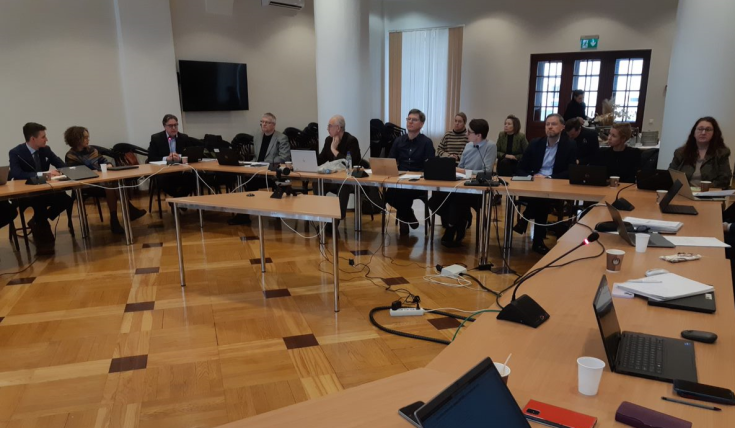Creating a blue economy roadmap

On 09 and 10 February 2023, the Policy Learning Platform organised an onsite peer review for the benefit of the Environmental Investment Centre (Estonia) in Tallinn, to address the policy challenge of “creating a blue economy roadmap for Estonia”.
The full overview can be found in the follow-up report, which will be published soon.
Current state of affairs
In July 2022, the Estonian Ministry of Environment proposed to create a Blue Economy Roadmap for Estonia that would align sub-thematic ambitions, strategic projects, partners, and similar approaches used in EU Horizon programmes. As a starting point for this process, the Ministry has appointed the Environmental Investment Centre as the leading party.
The Centre had already started mapping out the current situation which lead to the conclusion that the local scene is diverse, with Estonian institutions and interests sometimes being scattered and overlapping.
Therefore, policy advice was requested on how to manage a multi-level governance process (e.g. cross-ministerial or cross-sectoral policy making) in the field of Blue Economy in Estonia.
Peers from across Europe
Under the moderation of René Tönnisson and Mart Veliste, Thematic Experts on SME competitiveness, four excellent peers participated in the peer review:
- Juha Valtanen, Turku University of Applied Sciences, Finland
- Riccardo Leoncini, University of Bologna, Italy
- Petri Muje, Lapland University of Applied Sciences, Finland
- Gert Verreet, Government of Flanders, Belgium
Recommendations
Based on the fruitful exchange between peers, the beneficiary organisation, and local stakeholder representatives, a number of recommendations were drafted:
When deciding whether to create the blue economy roadmap or not, the main local stakeholders need to have a clear and shared understanding of the purpose of such a policy document: why is it needed and important? What is being valued? Who is it for?
In order to figure out where the blue economy roadmap would fit a thorough blue economy policy mapping is advised.
“Map it first and see if there is a road”. Are all relevant aspects already well reflected elsewhere (in other policy documents)?
The roadmap could start out as a mapping exercise, e.g. a flow chart.
A staged approach makes sense to tackle this complex policy. Stakeholders and obstacles in the ecosystem should also be mapped.
Suitable tools are SWOT and the Governance Assessment Tool.
For such a multilevel governance topic it is advised to set up a body or arrangement, e.g. a “blue hub team” or an intergovernmental consortium, that could function as a steering group for the policy topic.
An informal small group of representatives from the key stakeholders meeting regularly could be the starting point, to be a freeform communication channel between the different ministries.
„Co-ownership“ and „co-responsibility“ are important keywords for the success of such governance undertakings as well as having a clear focus of what is the partners workload and the expected roles of the stakeholders.
Criteria for selecting sustainability indicators could be:
- Sensitive to significant and specific pressures,
- relevant for development of management measures
- practicable,
- applicable across the region/sub-region,
- representative,
- degree of consensus among the parties involved,
The indicators should be aligned with the EC approach towards the blue economy as well as the IMO level SDGs.
EIC Peer Review final report.pdf
Final report of the EIC peer review
